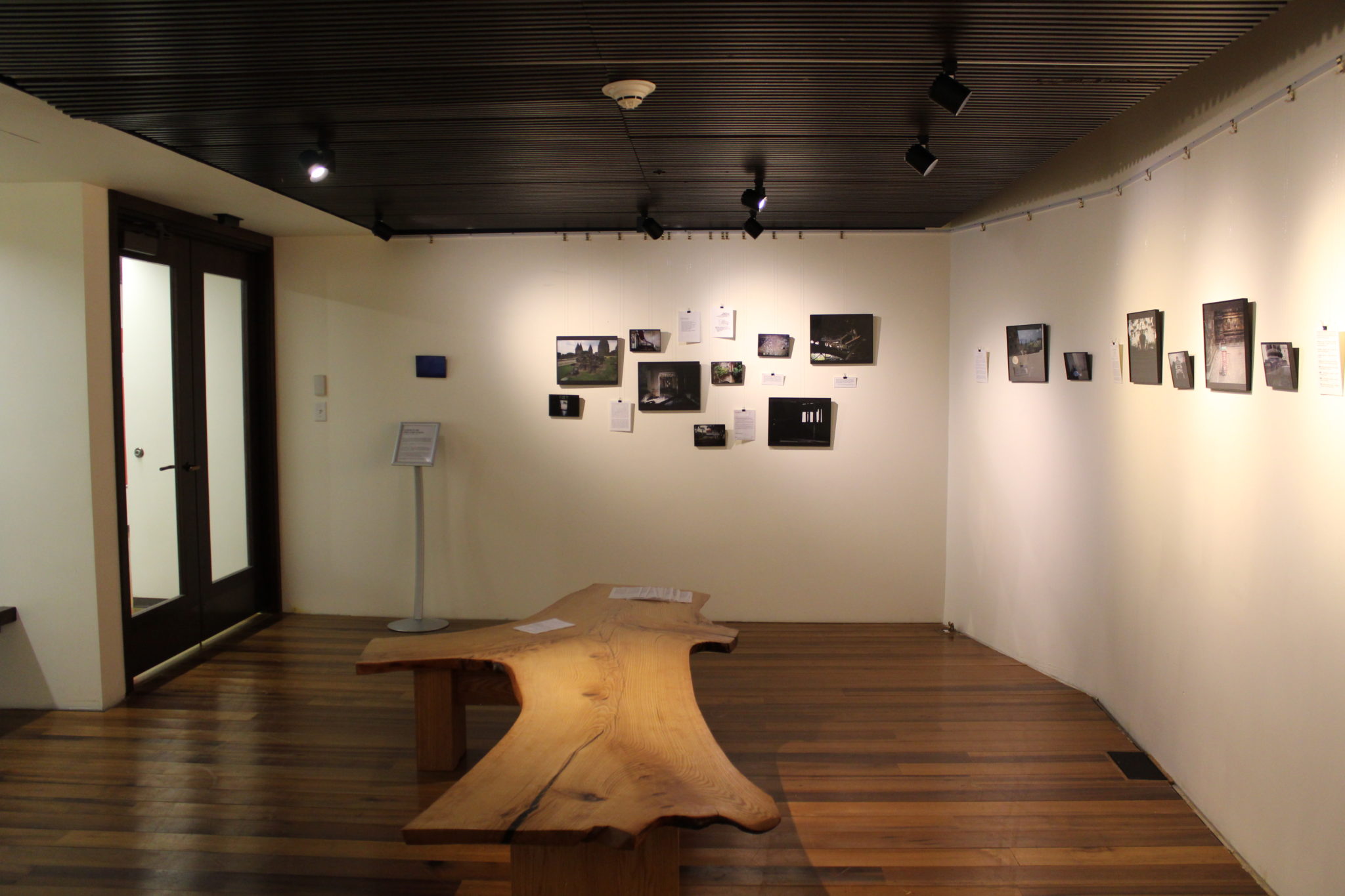
Cars whizz by, people hustle on, nearly every crevice in the world begins to look more and more homogenous.
Opened on April 1, “Ghosts of Preservation,” an exhibition by Sheau Yun Lim ’19, presents a collection of photographs that capture various scenes of South Asian cultural relics — a nod to pieces of the past that have survived the waves of modernization. Lim depicts everything from grand monuments like Borobudur to small, intimate places like a shop house in Malaysia; however, these photographs illustrate these scenes in various states of ruin. Lim’s piece provides a wistful, haunting hope for holding onto the past, while criticizing the selective nature of preserving history within the modern world.
A division of memories, Lim separates her pieces into the categories of “Narrating Crises,” “Universal Dreams” and “Making Knowledge.” This separation demonstrates a kaleidoscope of emotions that come with the destruction of old buildings and the rise of newer, “improved” structures, since Lim attempts to demonstrate that preservation itself is a type of bias as civilization chooses what exactly to remember. As Lim’s work guides a viewer through multiple structures in ruin across South Asia, she takes care to show the smaller, less frequently seen sites of colloquial ruin — like a house or a small theatre.
A once-was history and current architecture major, Lim has always been interested in how the past continues to exist in the present. In a phone interview with the News, she explained that she wanted to investigate “how we reinterpret our history, and preservation and how we do it through the built environment.” Lim, who is from Malaysia, describes how she noticed that tourism was taking over the entire town. As she worked in Indonesia in 2016 and 2017, she took many photos, which eventually coalesced into the exhibit currently shown in the Stiles gallery. However, these photos refrain from romanticizing all sites of preservation, as the crux of her piece challenges viewers to ask what relics deserve preservation and what relics do not.
Amidst Lim’s photographs, she intersplices poems, narratives and statements from UNESCO regarding requirements to define a “World Heritage Site.” The poems talk of “the timeless aura of places,” and “life-enhancing experiences and meanings … made whole again by the artisan’s hand” as discussed in Laurence Loh’s piece. Yet perhaps the most impactful text comes from the criteria of works worth preserving, such as the necessity of being a “masterpiece of human creative genius” or “directly or tangibly associated with events or living traditions, with ideas or with beliefs, with artistic and literary works of outstanding universal significance.” However, even these “official” guidelines, when contrasted with photos of nondescript scenes of everyday life, seem presumptuous and gaudy.
Lim explains that the purpose of her collection is not about presenting an authoritative take on what life in Southeast Asia was like, but rather about investigating how “these fragments speak and interact with one another.” Her exhibition comments on how the elevated historical artifacts engage in a conversation with the sentiments of inhabitants and recollections of foreigners.
After all, her exhibition is not about choosing what deserves remembrance, but rather explaining the futility in choosing at all. Even as academics have come to recognize and rectify the biases that warp our telling of history, Lim suggests that many such attempts are still likely to miss the target. The preservation of history is inherently biased. Even without malicious intent, those that choose what carries into the future, choose what pieces of a culture were important, what pieces are worth remembering.
Ultimately, such selective remembrance carries a bias that erases some of the past’s personal nuances. While the government may work to preserve grand touristy locations such the mansion that was the meeting place of two founders of Malaya, Lim hopes to highlight a small family shrine or the familiar terang bulan stall that may merely represent a childhood dessert — the details that will slip through the cracks.
Unlike your typical preservationist piece, “Ghosts of Preservation” does not blindly celebrate the authorized sites of cultural preservation. Lim asks us to remember — not the grand, spectacular or genius of the old world — but the small, everyday moments that only the current generation may recall.
Allison Chen | allison.chen@yale.edu







